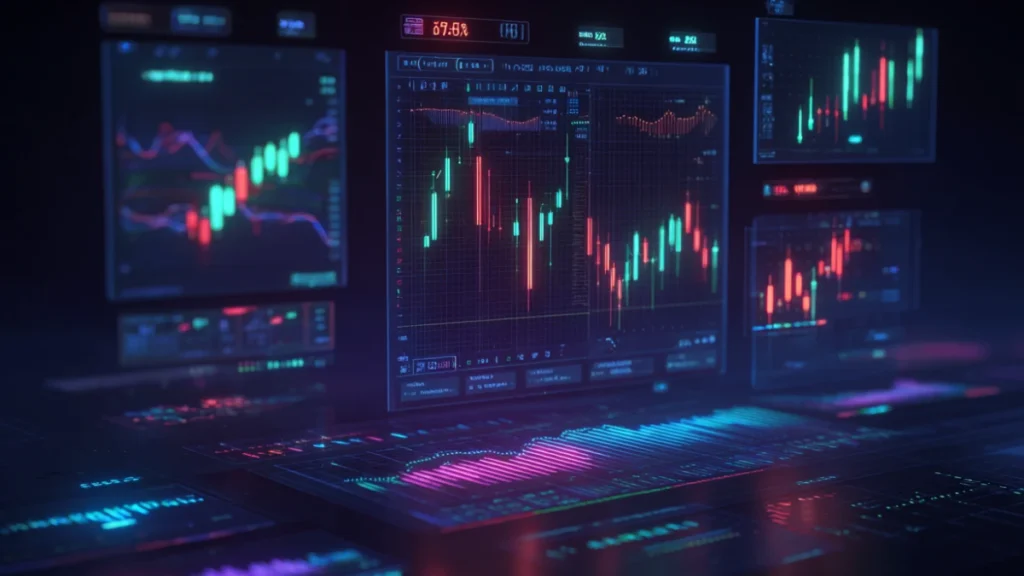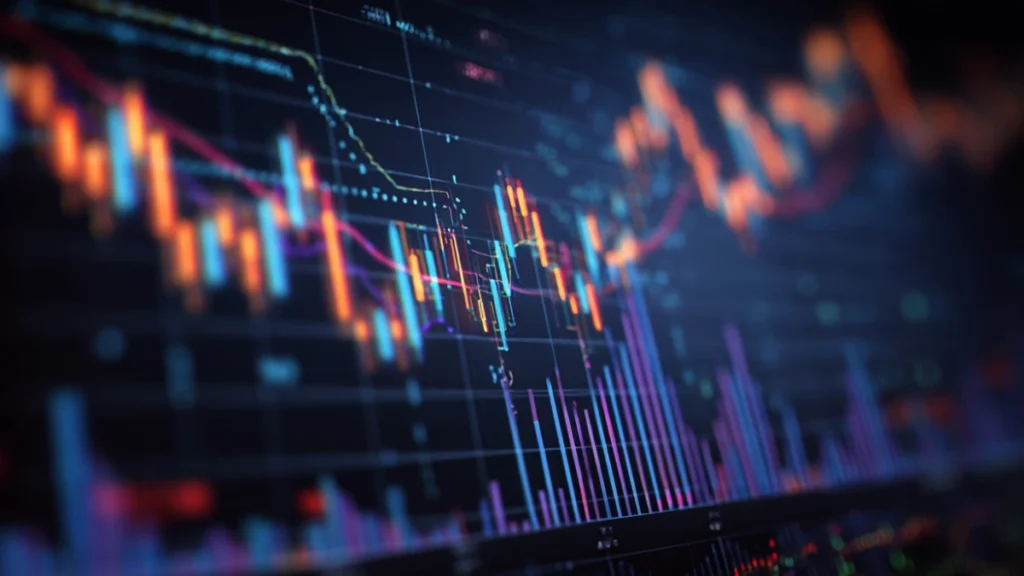Table of Contents
Introduction
Trading during high-impact news releases — like Non-Farm Payrolls (NFP), CPI, or interest rate decisions — can be both exciting and dangerous. While massive price moves offer quick profit potential, they also bring extreme volatility, slippage, and emotional stress. That’s why smart traders approach news events with a clear plan, strong risk control, and the right mindset.
In this guide, you’ll learn how to navigate economic events like a pro — even if you’re just starting. We’ll break down how to prepare before a major release, what to watch for during the announcement, and how to trade or avoid setups safely when the market goes wild.
📰 What Is News Trading?
News trading is a strategy that takes advantage of sharp price movements caused by scheduled economic announcements or breaking headlines. These events often create sudden volatility as institutional traders react to changes in interest rates, inflation, employment, or geopolitical developments.
There are two main approaches:
• Pre-News Trading: Entering a position before the event in anticipation of a move.
• Post-News Trading: Waiting for the dust to settle, then trading the breakout, pullback, or trend that follows.
Some traders also trade the spike reaction within seconds of the release — but this is risky and requires ultra-fast execution.
Whether you trade forex, gold, indices, or crypto, news events can act as fuel — either boosting existing trends or completely reversing the market.
📌 Key takeaway: News trading isn’t about guessing the outcome — it’s about preparing for possible scenarios and managing risk like a professional.
📅 Top Economic Events That Move the Market
Not all news is created equal. Some events consistently cause major volatility — especially in forex, gold, and index markets. As a beginner, focus on these high-impact releases that are most likely to move price significantly:
🏦 Central Bank Decisions
• FOMC (Federal Reserve) – USD
• ECB (European Central Bank) – EUR
• BOE (Bank of England) – GBP
• BOJ (Bank of Japan) – JPY
These determine interest rates and future policy — often leading to massive swings in currency pairs and commodities.
📈 Employment Data
• Non-Farm Payrolls (NFP) – Released monthly (USD)
• Unemployment Rate – Also monthly
NFP is known as the most traded news event in forex. A surprise number can move the market by 50–100 pips in seconds.
💹 Inflation Reports
• CPI (Consumer Price Index) – Inflation gauge
• PPI (Producer Price Index)
These reports influence central bank decisions and determine the value of currencies, especially the USD and EUR.
📊 GDP and Retail Sales
• Economic growth and consumer spending figures reflect a country’s financial health. A strong or weak report often shifts market sentiment.
💣 Geopolitical or Unexpected Events
• War headlines, oil supply issues, or political chaos can cause unscheduled market volatility.
👉 Tip: Use an economic calendar like Forex Factory or Investing.com to track key events by date, time, and expected impact.
🛡️ Should Beginners Trade News or Avoid It?
If you’re just starting out, the answer is simple: avoid trading during news events — until you’re ready.
Here’s why:
• Extreme volatility: Price can spike 50–100 pips in seconds, then reverse violently.
• Slippage: Your stop-loss might not execute at the intended level, leading to bigger losses than expected.
• Whipsaws: Price often fakes out in both directions before committing to a move.
• Emotional pressure: The speed of movement can trigger fear, panic, or greed — clouding your decision-making.
That said, news trading isn’t evil. It becomes powerful once you’ve:
• Mastered risk management
• Developed a calm, rules-based approach
• Traded through multiple news releases on demo
📌 Bottom line: Watching news events is crucial, but jumping in unprepared is dangerous. Start by observing price reactions — not participating in them.

🧠 How Smart Traders Prepare for News Events
Experienced traders don’t gamble on news — they plan scenarios in advance and let the market come to them. Here’s how you can approach it the smart way:
- Know the Event and Forecast
Before any big release, check:
• What is being announced (e.g., NFP, CPI)
• What’s expected (consensus forecast)
• What happened last time
This helps you anticipate market sensitivity and potential surprise impact. - Mark Key Levels
Use your chart to identify:
• Support/resistance zones
• Liquidity pools
• Fair value gaps
These act as magnets during news-driven volatility. - Set Conditional Orders (Optional)
Some traders use buy/sell stop orders just above/below key levels — but only do this if you’ve tested the strategy and accept the risk of slippage. - Wait for Reaction, Not Prediction
The smartest move? Let the news drop. Watch how price behaves after the spike. Enter only when:
• A clear breakout or reversal forms
• Volume confirms direction
• You can define your stop-loss and risk clearly - Reduce Position Size
Volatility is higher, so your risk per trade should be smaller than normal — even if you see a perfect setup.
✅ Tip: Don’t trade every event. Pick the ones that align with your strategy and time zone. Observe first, then act with precision.
📉 Common News Trading Mistakes Beginners Make
Jumping into news trading without experience often leads to fast losses. Here are the most common mistakes new traders make — and how to avoid them:
❌ Trading the News Itself, Not the Reaction
Many beginners enter as soon as the news drops — hoping to catch the move. But this is often when volatility is wildest.
Smart traders wait for the initial spike and trade the reaction, not the release.
❌ Ignoring Spread and Slippage
During high-impact events, spreads widen and your orders may not execute at your expected price.
Always check your broker’s performance during volatile sessions.
❌ Overleveraging
Because news can move fast, many traders try to “get rich quick” by increasing position size.
This is a recipe for blowing your account. Reduce size, increase discipline.
❌ Trading Every News Event
Not every release creates a clear opportunity. Avoid overtrading by sticking to major events and sitting out when unsure.
❌ Trading Without a Plan
If you don’t have a clear strategy, defined stop-loss, and risk limit — don’t trade the news. Emotion-based decisions rarely end well.
🛠️ Tools You Need for Safe News Trading
Smart news trading isn’t about reacting faster — it’s about being better prepared. These essential tools will help you stay ahead and protect your capital:
📅 1. Economic Calendar (Must-Have)
Track all upcoming events using tools like:
• Forex Factory
• MyFxBook
• Trading Economics
Look for high-impact news marked in red — especially related to interest rates, inflation, and employment.
⏰ 2. News Alerts and Push Notifications
Use tools like:
• Investing.com app
• MT4/MT5 news plugins
• Twitter finance accounts
…to get real-time updates or alerts before major releases hit.
📊 3. Volatility Tracker
Monitor recent volatility in the market you’re trading. Tools like:
• ATR (Average True Range)
• Volatility indicators
…can help you adjust stop-loss and lot size accordingly.
📈 4. Charting Platform with Reaction Speed
Use a fast and reliable charting platform like:
• TradingView
• NinjaTrader
…to watch how price reacts within seconds after the release.
💡 5. Your Trading Journal
Record your news trades (or even your observations). Over time, patterns will emerge that sharpen your edge and timing.

🔚 Final Thoughts: Mastering News Events Without Gambling
News trading can be thrilling — but without structure, it’s no different from gambling. The difference between reckless and professional traders comes down to one thing: preparation.
Economic events move markets because they shift expectations about interest rates, inflation, or economic growth. These shifts create opportunity — but only for those who’ve done their homework. You don’t need to guess the outcome. You don’t need to beat the spike. You just need to stay calm, read the reaction, and let the chart confirm the story.
If you’re a beginner, start by watching how different markets react to NFP, CPI, FOMC, or central bank speeches. Record your observations. Notice the fakeouts, the volume changes, and the levels price respects. Over time, you’ll build intuition — not based on luck, but on real, repeatable data.
For beginner traders who are serious about building long-term consistency, developing the ability to navigate economic volatility is one of the most valuable skills you can acquire. It’s not just about reacting quickly or placing bets before a number is released — it’s about understanding the why behind the price movements that follow. When a central bank surprises the market, or inflation data deviates from expectations, the reaction isn’t random.
Institutional players, hedge funds, and algorithmic systems reprice risk in real time, often moving markets in a matter of seconds. By training your eyes to observe how price behaves after an announcement — rather than focusing solely on the data outcome — you begin to shift from gambling to calculated positioning. For example, after a major CPI release, you might notice an initial spike that gets immediately rejected at a key resistance zone, followed by aggressive volume stepping in the opposite direction.
This isn’t just noise — it’s a signal. But unless you’ve practiced watching these events, journaled reactions, and tested your setups with reduced size, it’s easy to be caught off guard. That’s why combining this kind of reactive awareness with technical confirmation — such as moving averages and trend filters — can give you a much clearer structure when volatility hits. It also reinforces the importance of patience: often, the best trade comes not during the chaos, but after it.
If you want to deepen your understanding of how economic indicators influence price across multiple asset classes, this guide by Investopedia does a great job explaining the role of key reports like NFP, interest rate decisions, and inflation figures in shaping short-term sentiment. Ultimately, news events are not traps to be feared — they’re accelerants of opportunity, if you’re equipped with a plan, a process, and the discipline to act only when the conditions align. Over time, your edge will come not just from setups, but from your ability to remain calm when the market is at its loudest — and to strike only when the path is clear.
And remember: you don’t need to trade every event. Some of the best decisions you’ll ever make as a trader are the ones where you stay out — because you waited for the right setup with defined risk and high probability.
Stick to the process. Stay in control. And let the market come to you.

